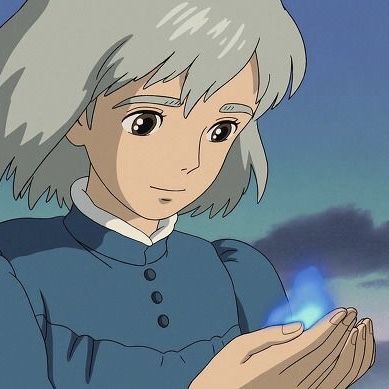Sophie’s Curse, a Reflection of Insecurity in "Howl’s Moving Castle"
- Benl Chronicle
- Oct 25, 2023
- 2 min read
By Nrl Liya
Edited by Siti Nur Najihah

Studio Ghibli has adapted work from Diane Wyne to life, “Howl’s Moving Castle”, released in 2004. Studio Ghibli’s famous work for its enchanting narrative and animation style captivates audiences worldwide. This film is visually stunning and packaged with fantastical elements, intriguing themes of humanity through various perspectives, and an always mesmerising soundtrack.
The story introduces us to Sophie, a young woman with a reserved and passive nature who perceives her world as inferior to those around her. She resigns herself to a quiet, uneventful life, devoting herself to the hat shop she inherited from her dead father.

Sophie’s characterisation surrounds herself with an air of solemnity and darkness, reflecting her insecurity that her life would be unremarkable, unlike her sister Lettie, who is pursuing her dream and is desired by many men. Furthermore, Sophie’s insecurity permeates not only how she perceives herself but her whole life.
However, this soon changes when she encounters a dashing young man with blond hair who rescues her from being harassed by two guards. The man, who she quietly denies Howl, not only saves her from distress but introduces her to a world of kindness and magic. Unknowingly, this encounter buried a seed of jealousy in the Witch of the Waste, claiming that Howl’s heart belonged only to her. The witch then curses Sophie for old age, turning her into an elderly woman with a wrinkled face and a hunched form.

Fascinatingly enough, Sophie’s reaction to her transformation is a form of such easy acceptance. Rather than panicking for at least a whole day and frantically not knowing what to do after being cursed, Sophie finds contentment in her new form. The curse has freed her from the worries of youth. She decides to leave her home and start a new life the following day, not wanting to show her recent form to her family. She embarks on a journey to the land of waste for a new start, which leads her to Howl’s Moving Castle, where she ends up staying as a house cleaner for sanctuary and finding a way to lift her curse. She creates a new family with Howl, a magical fire called Calcifier, and a young man, Markl.
Watching the film, I find it intriguing on Sophie’s curse and her insecurities. Her appearance changes depending on how she views herself. It would reflect her negative self-image and insecurities by ageing, but when Sophie regains her self-confidence and speaks her mind with emotions, she looks youthful and more attractive. When Sophie does not bury herself in negativity and let her insecurity eat her, she turns into a beautiful young woman with a heart full of passion and love for the world.
Sophie’s curse reminds me of a quote: “Beauty is in the eye of the beholder”.
It showcases the idea that our perception decides what beauty is, which is subject to our own beliefs and self-worth. When we lack self-love, our self-images become obscure and full of self-loathing. And when we don’t believe in ourselves, the feelings of self-love that are absent in our hearts, how can we live? How can one truly live if they don’t even believe in themselves?











Comments